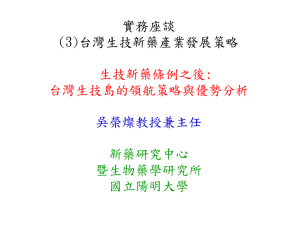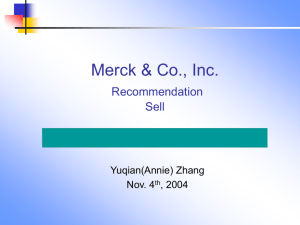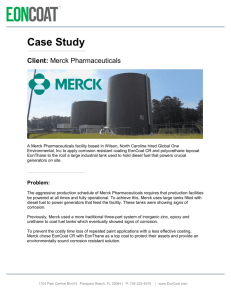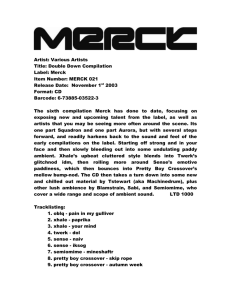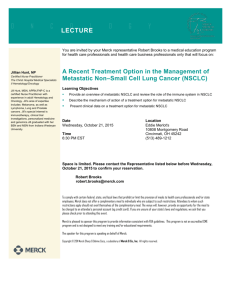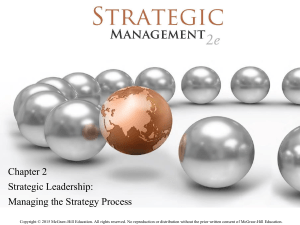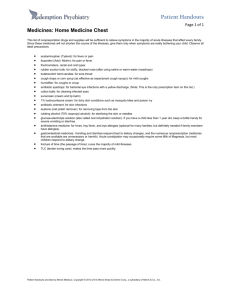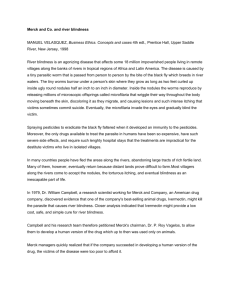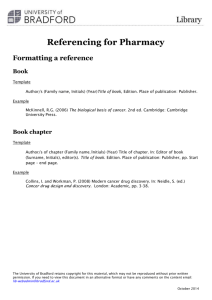vioxx and the merck team effort
advertisement
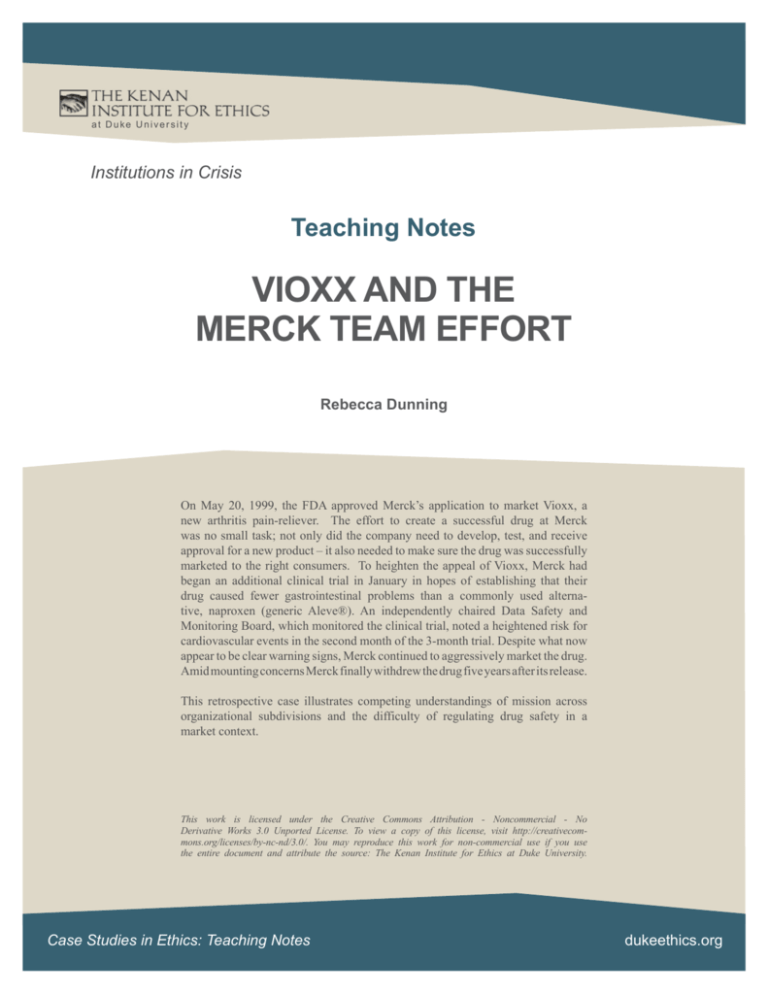
at Duke Universit y Institutions in Crisis Teaching Notes VIOXX AND THE MERCK TEAM EFFORT Rebecca Dunning On May 20, 1999, the FDA approved Merck’s application to market Vioxx, a new arthritis pain-reliever. The effort to create a successful drug at Merck was no small task; not only did the company need to develop, test, and receive approval for a new product – it also needed to make sure the drug was successfully marketed to the right consumers. To heighten the appeal of Vioxx, Merck had began an additional clinical trial in January in hopes of establishing that their drug caused fewer gastrointestinal problems than a commonly used alternative, naproxen (generic Aleve®). An independently chaired Data Safety and Monitoring Board, which monitored the clinical trial, noted a heightened risk for cardiovascular events in the second month of the 3-month trial. Despite what now appear to be clear warning signs, Merck continued to aggressively market the drug. Amid mounting concerns Merck finally withdrew the drug five years after its release. This retrospective case illustrates competing understandings of mission across organizational subdivisions and the difficulty of regulating drug safety in a market context. This work is licensed under the Creative Commons Attribution - Noncommercial - No Derivative Works 3.0 Unported License. To view a copy of this license, visit http://creativecommons.org/licenses/by-nc-nd/3.0/. You may reproduce this work for non-commercial use if you use the entire document and attribute the source: The Kenan Institute for Ethics at Duke University. Case Studies in Ethics: Teaching Notes dukeethics.org Target Audience Organizational studies Ethics Business administration Learning Objectives 1. 2. To gain insight into endemic ethical conflicts which coexist within organizations and are characteristic of particular industries. To consider and evaluate how accountability and governance arrangements within an organization can contribute to organizational crises. Questions and Notes for Class Discussion 1. Conflict and Crisis: The Vioxx case can be seen as an example of an organizational crisis—the viability of Merck as a respected and highly profitable pharmaceutical company was threatened. Did the Vioxx case also represent an ethical crisis for Merck? Or is the situation more aptly described as an ethical conflict? An ethical crisis means that one set of standards of evaluation and ideas about how to live (and work) has been challenged, requiring consequential organizational decisions to be made. Such decisions are ‘consequential’ because they would impact the existing dominant ethos of the organization. The Merck/ Vioxx case does not represent such a phenomenon. This case is representative of an organization, indeed, an entire industry, that exists in a constant state of ethical conflict created by the very nature of their business. Pharmaceutical companies seek to develop drugs and generate profits from these drugs, yet they are also charged with the arguably conflicting mission of causing no harm to consumers. The FDA, though not specifically discussed in the case, also experiences similar pressures with regard to pharmaceuticals: its public health mission includes the protection of consumers (protection from poorly designed drugs), as well as the timely approval of beneficial drugs. The practices adhering to one set of goals (get drugs quickly to market) can easily be in conflict with another set of goals (protect consumers from harmful drugs). 2. Accountability and Ethical Conflict: Consider how the differing sources of accountability impacted the ethos of (a) the research division (Merck Research Labs) and (b) the Marketing and Sales Division. Also consider how individuals working within these divisions interpreted mission and purpose when faced with the need to account for their activities. The Marketing and Sales Division had a clear mandate—to maximize sales of Vioxx. Merck Research Labs was charged with developing profitable new drugs. It is unclear whether or not either division could be called to account for harm to consumers. As a result, individuals working in each division could fulfill their roles as excellent workers at Merck without any clear reference to the goal of ensuring consumer safety. 3. Governance and Crisis: Consider the issue of governance as it relates to the relationship between the DSMB, the HHPAC, and the Merck research and Merck marketing divisions. Was the relationship among these entities too intertwined? Or were they not sufficiently integrated? Case Studies in Ethics: Teaching Notes 2 dukeethics.org Governance refers to decision-making authority and responsibility allocated across individuals and entities within an organization. The semi-independent DSMB appeared to be responsible for patient safety, yet it did not have the authority to call for an end to the trial. Nor did it have the authority to contact the FDA to report problems with Vioxx. The authority to end the trial (or stop distribution of Vioxx) lay within the Steering Committee and the HHPAC, and specifically within the purview of Ed Scolnick (who served as the President of Merck Research Laboratories, chaired the HHPAC, and served on the Merck Board of Directors). Case Studies in Ethics: Teaching Notes 3 dukeethics.org

